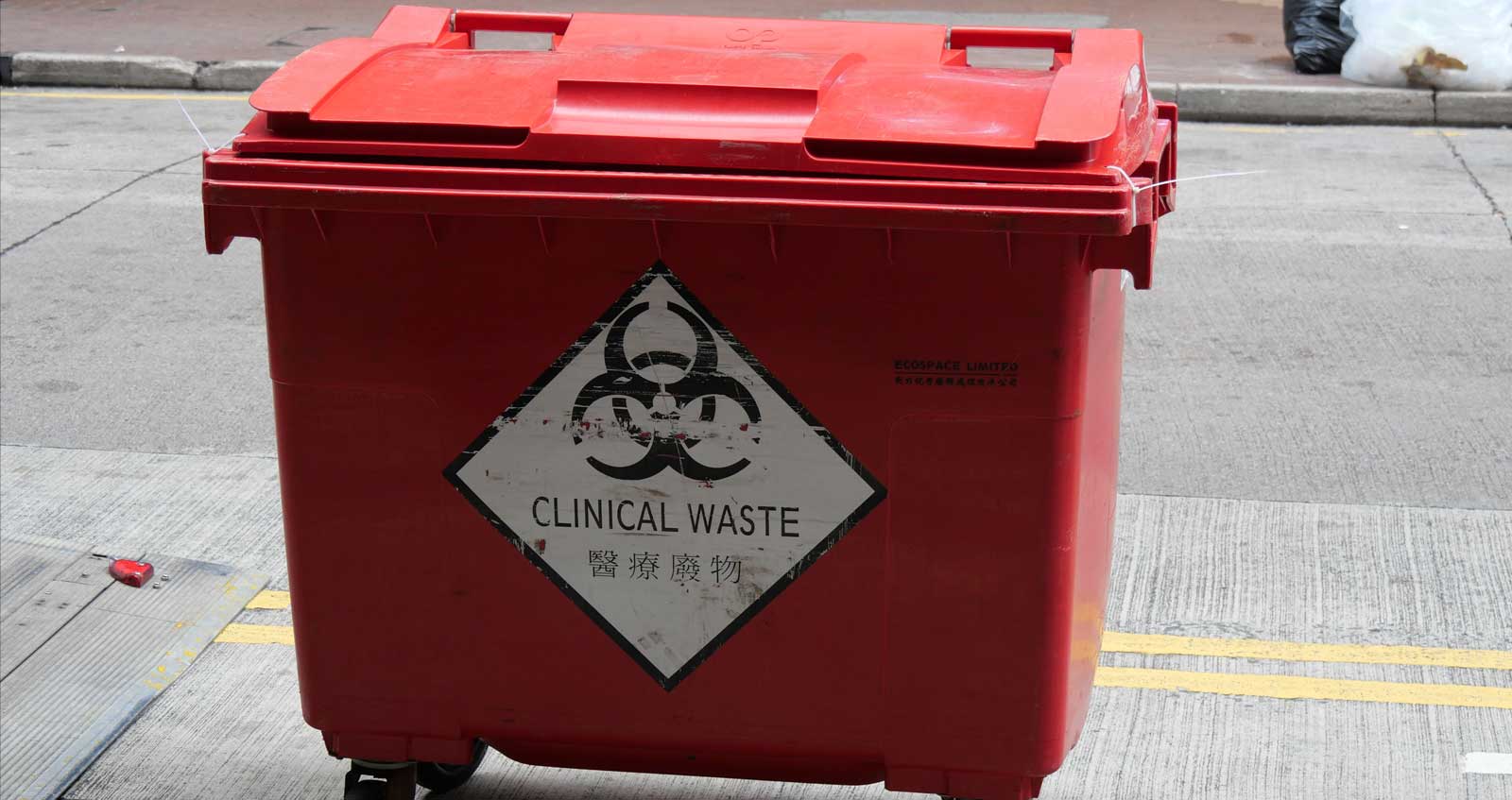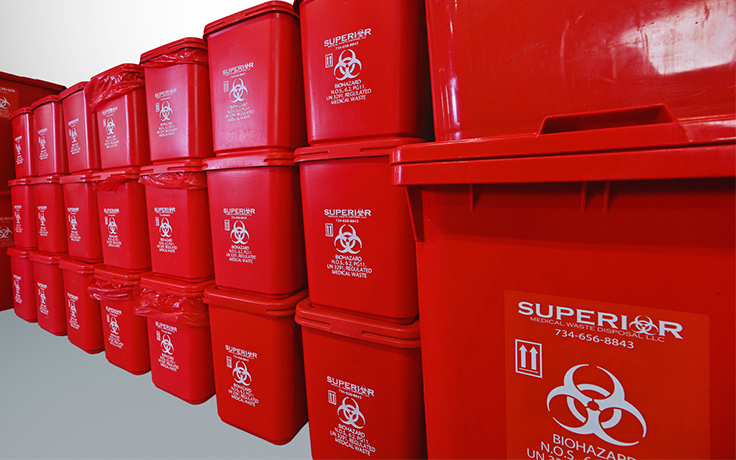Shielding Health: Professional Medical Waste Removal Services for a Tidy Environment
Wiki Article
Keep Ahead of Regulations: Expert Recommendations on Medical Garbage Disposal
In a globe where the healthcare industry is frequently advancing, it is essential for clinical facilities to stay in advance of policies when it comes to the proper disposal of clinical waste. From understanding the different categories of clinical waste to executing the appropriate collection and partition approaches, this conversation will provide useful understandings and actionable suggestions to aid centers stay in advance of policies in the ever-changing landscape of clinical waste disposal.Comprehending Clinical Waste Categories
Understanding clinical waste categories is vital for proper disposal and monitoring in healthcare facilities. Clinical waste refers to any type of waste generated by health care tasks that may present a threat to public health and wellness or the setting. It is important to classify medical waste precisely to guarantee its secure handling, disposal, transportation, and treatment.There are several categories of medical waste that medical care centers need to be accustomed to. One of the most usual groups consist of infectious waste, pathological waste, sharps waste, pharmaceutical waste, and chemical waste. Each classification has certain standards and laws for its proper management and disposal.
Transmittable waste includes products infected with blood or other bodily fluids, such as handwear covers, dress, and research laboratory cultures. Pathological waste refers to human tissues, organs, or body parts that require special delivery and disposal. Sharps waste includes utilized needles, syringes, and other sharp items that can trigger injury and transfer infections. Pharmaceutical waste makes up ended, extra, or polluted medicines that require mindful handling and disposal. Chemical waste includes solvents, disinfectants, and other chemical substances used in healthcare facilities.
Staying Up-To-Date With Regulatory Modifications
Staying present with regulative adjustments is crucial for health care facilities to guarantee compliance and appropriate monitoring of clinical waste disposal. medical waste removal. With laws regularly progressing, it is vital for healthcare centers to remain up-to-date to avoid penalties, penalties, and potential harm to the setting and public health and wellnessTo stay in advance of regulatory adjustments, health care centers must establish a system for surveillance and tracking updates. This can be done by registering for governing newsletters, attending workshops and conferences, and proactively taking part in industry organizations. Additionally, centers should assign a personnel or team accountable for staying notified and disseminating info to relevant stakeholders.
Routine communication with governing agencies is additionally essential. Medical care facilities need to establish partnerships with regional, state, and government companies to guarantee they are mindful of any type of changes in laws that may influence their waste management methods. This can be done through routine conferences, participation in public remark durations, and proactive involvement with regulatory companies.
Additionally, healthcare centers ought to consider partnering with waste administration companies that concentrate on medical garbage disposal (medical waste disposal services with WasteX). These firms are frequently skilled in the most up to date regulations and can offer support and assistance to make certain compliance
Executing Correct Collection and Partition Methods
To efficiently handle clinical garbage disposal, medical care centers have to develop proper collection and segregation techniques according to regulatory guidelines. Executing these methods guarantees the safe handling and disposal of potentially hazardous products, shields the environment, and minimizes the danger of injuries and infections to health care workers and the public.
Proper collection and segregation approaches entail using assigned containers and identifying systems. Healthcare centers need to supply clearly labeled containers for various sorts of medical waste, such as sharps, infectious waste, pharmaceutical waste, and non-hazardous waste. These containers should be color-coded and plainly marked to avoid complication and advertise easy recognition.
In addition, health care facilities should educate their personnel on the Check Out Your URL appropriate procedures for accumulating and setting apart medical waste. This includes enlightening them on the different kinds of waste, the ideal containers to utilize, and the significance of following laws and standards. Regular training sessions and correspondence course should be conducted to make certain that employee continue to be updated on ideal methods.
Moreover, medical care centers must develop a system for regular collection and disposal of clinical waste. This may include partnering with licensed waste management business that focus on medical garbage disposal. These companies will certainly ensure that the gathered waste is transported and disposed of in conformity with regulative demands.
Picking the Right Disposal Approaches

Incineration is just one of one of the most common and effective methods for throwing away particular kinds of you can find out more clinical waste, such as pathological waste and sharps. It entails the controlled combustion of waste at heats, minimizing it to ash. Nonetheless, incineration can launch unsafe Recommended Reading toxins right into the air and add to air contamination.

Chemical treatment includes the usage of chemicals to reduce the effects of the waste and sanitize. Microwave therapy makes use of microwave power to heat and sanitize the waste.
Making Sure Conformity Via Documentation and Training
After thoroughly thinking about the ideal disposal approaches for clinical waste, medical care centers need to make sure conformity with guidelines and lessen environmental effect by executing effective documentation and training treatments. This action is vital in keeping a sustainable and safe environment for both medical care employees and the public.
Health care workers who deal with medical waste must get proper training on waste partition, taking care of, and disposal treatments. By supplying detailed training, health care centers can encourage their team to make enlightened choices and decrease the danger of incorrect waste disposal.
Verdict
Finally, staying in advance of policies in clinical waste disposal is vital for medical care centers. medical waste removal service. Comprehending the various categories of clinical waste, remaining upgraded with regulatory adjustments, applying correct collection and partition techniques, choosing the proper disposal approaches, and making sure conformity through paperwork and training are all essential actions. By following these guidelines, medical care organizations can successfully get rid of and manage of clinical waste in a risk-free and accountable fashionFrom recognizing the various categories of clinical waste to carrying out the ideal collection and partition techniques, this discussion will certainly offer valuable insights and actionable ideas to help facilities stay in advance of policies in the ever-changing landscape of clinical waste disposal. - medical waste disposal services with WasteX
The most usual classifications consist of infectious waste, pathological waste, sharps waste, pharmaceutical waste, and chemical waste. Medical care facilities need to offer clearly labeled containers for different kinds of medical waste, such as sharps, transmittable waste, pharmaceutical waste, and non-hazardous waste. Healthcare facilities ought to establish a detailed system to tape-record and track all facets of clinical waste disposal, consisting of kinds of waste produced, amounts, and disposal approaches used. Medical care workers that deal with medical waste ought to get appropriate training on waste segregation, taking care of, and disposal treatments.
Report this wiki page